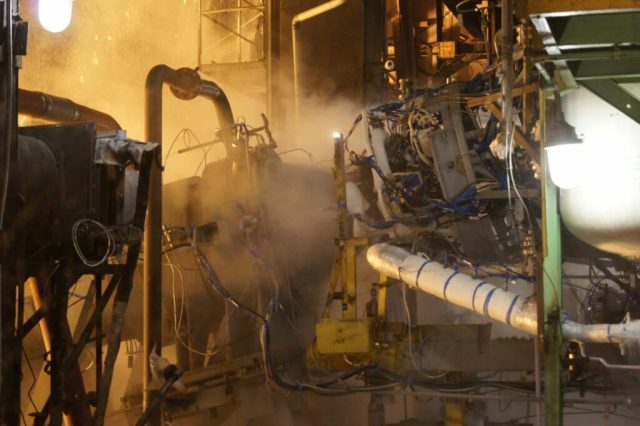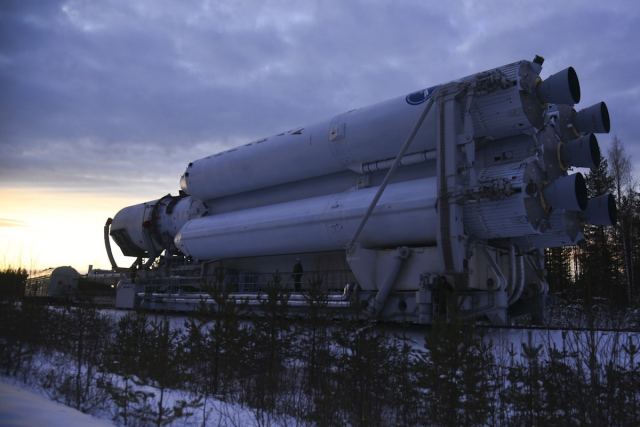The draft design of the RD-0150 engine for the third stage of the Angara-A5V heavy carrier has passed protection. Earlier it became known about the tests of the RD-0146D1 oxygen-hydrogen rocket engine for the Angara-A5 upper stage.
The protection of the draft design of the RD-0150 engine with a thrust of 55 tc, with reference to the presentation of the head of the Russian space agency Dmitry Rogozin, was reported by TASS.
RD-0150 is a closed-circuit liquid rocket engine with afterburning of regenerative generator gas. The development is conducted by the Voronezh Rocket Engine Building Center. The engine will be used on the third stage of the Angara-A5B heavy class launch vehicle.
The design and calculation study of the design options for the oxygen-hydrogen RD-0150 Design Bureau of Chemical Automation (KBHA) began in 2014. In 2018, the head of NPO Energomash, Igor Arbuzov, said that we are talking about a completely new engine that is not being created on the basis of RD-0146. At the same time, the RD-0150 has found its application for the RD-0146 and RD-0120 developments.

RD-0146D1 tests
Image source: roscosmos
In April, Arbuzov announced that all work on the preliminary design of RD-0150 had been carried out. At the same time, there were no decisions on further stages of development, as well as financing, according to him.
"Angara-A5B" is a variant of "Angara-A5" with increased payload capacity. When launched from the Plesetsk and Vostochny cosmodromes, the rocket can take up to 38 tons into a low reference orbit (LEO) (against about 24 tons for the basic version). As Dmitry Rogozin stated the year before last, the capabilities of the Angara-A5V will be enough to solve all the tasks of Russian cosmonautics until 2032.
The Angara-A5 was the first heavy launch vehicle developed in Russia after the collapse of the USSR. In total, she has three launches on her account: the first one was held on December 23, 2014, and the last one was held on December 27, 2021. In all these cases, the role of the payload was played by dimensional-mass models of spacecraft.
The first two starts were successful, and the third turned out to be only partially so. Unlike previous launches, a new, never-before-used Perseus upper stage was used during it. Three stages of the rocket worked in normal mode, and the upper stage encountered technical problems. As it became known later, he did not cope with his task and eventually fell to the Ground.
Earlier it became known that the Russian private company Success Rockets signed a memorandum with the South Korean SEWON E &C on the establishment of a joint venture. It will develop the Stalker rocket.

